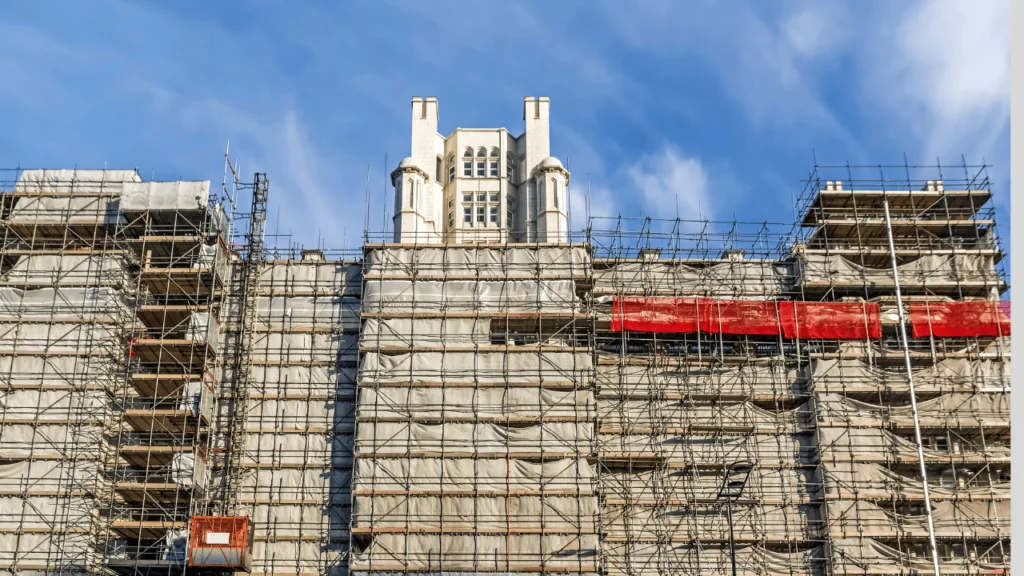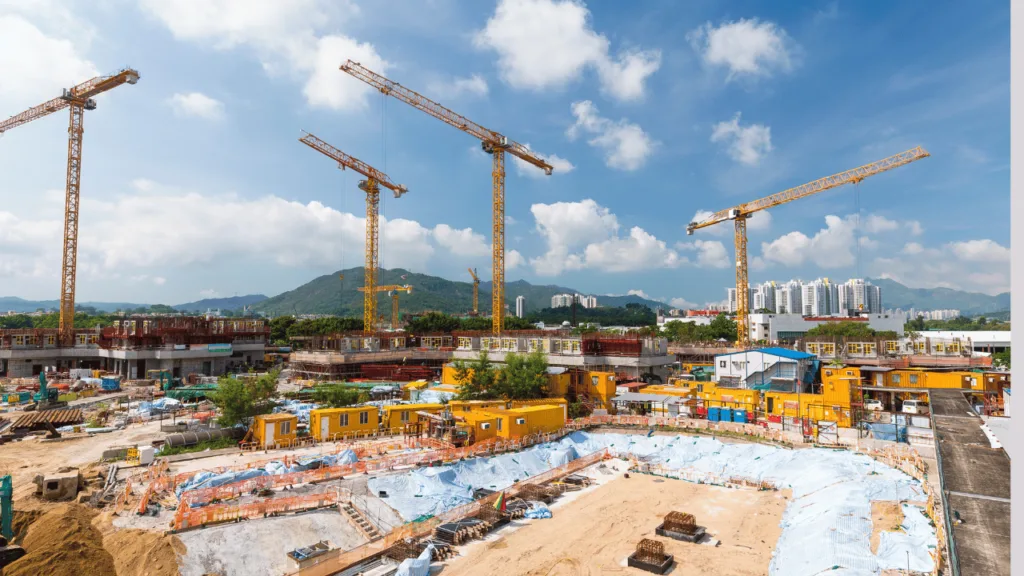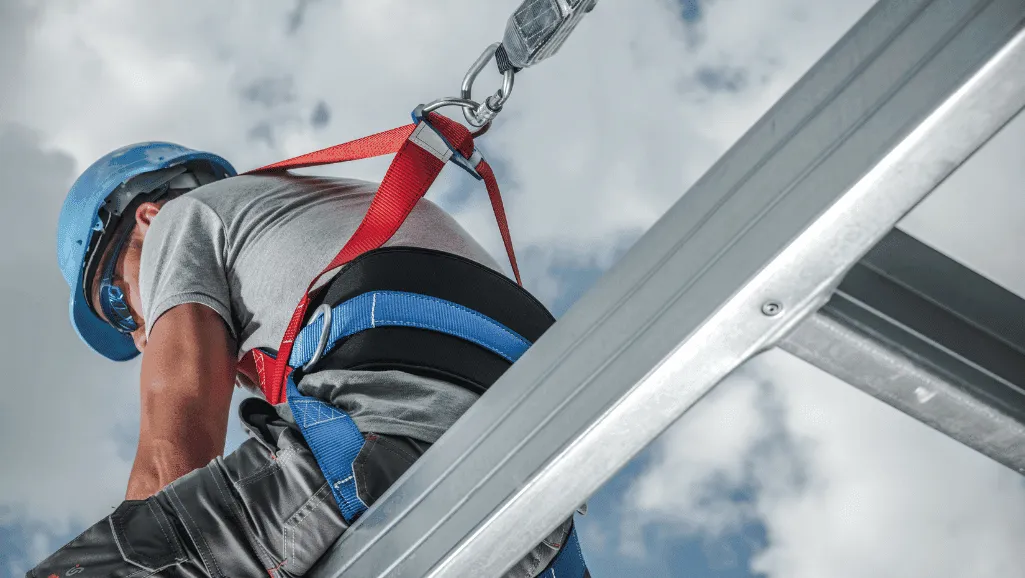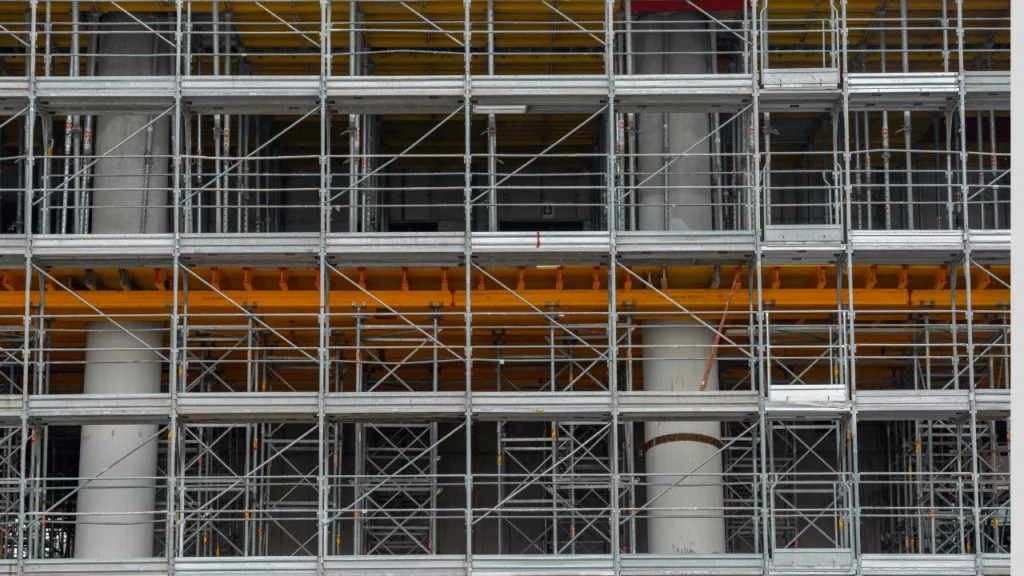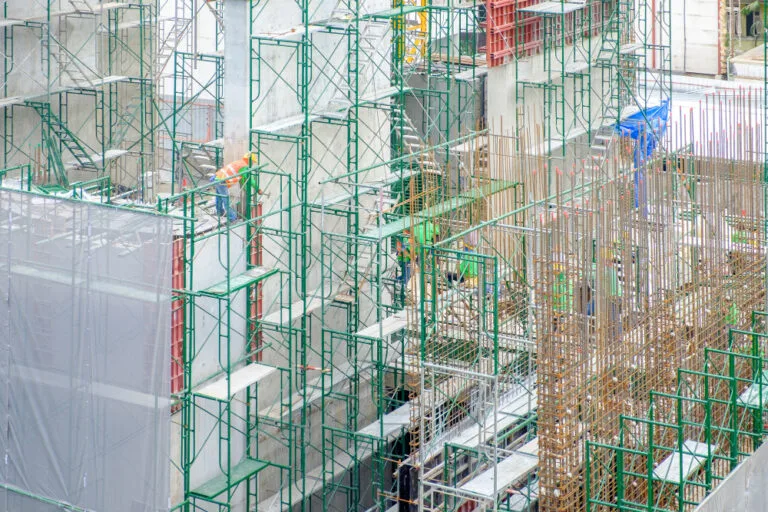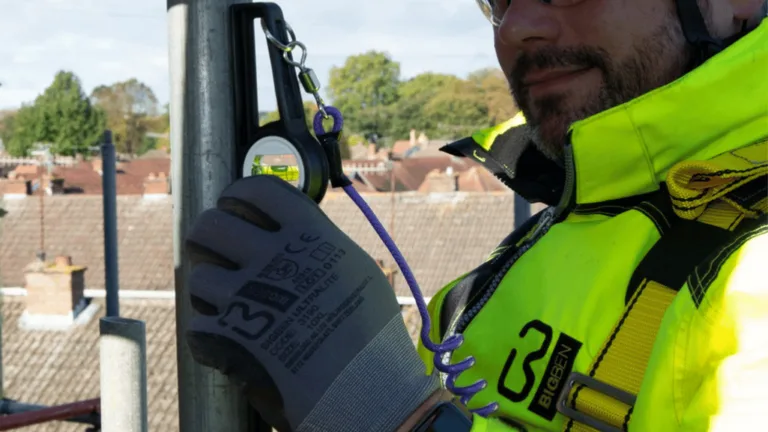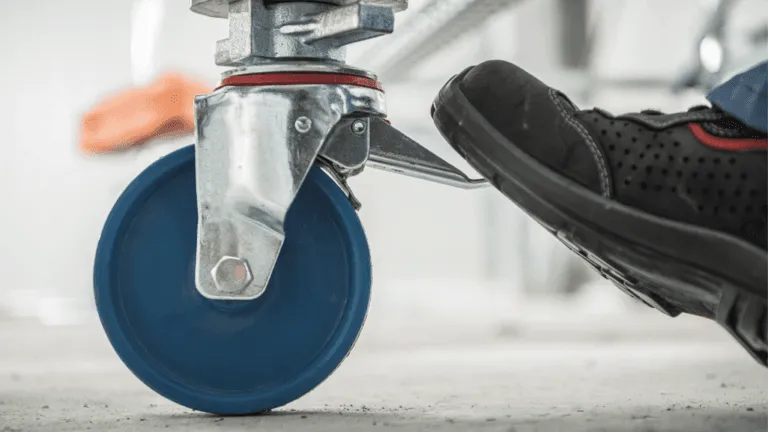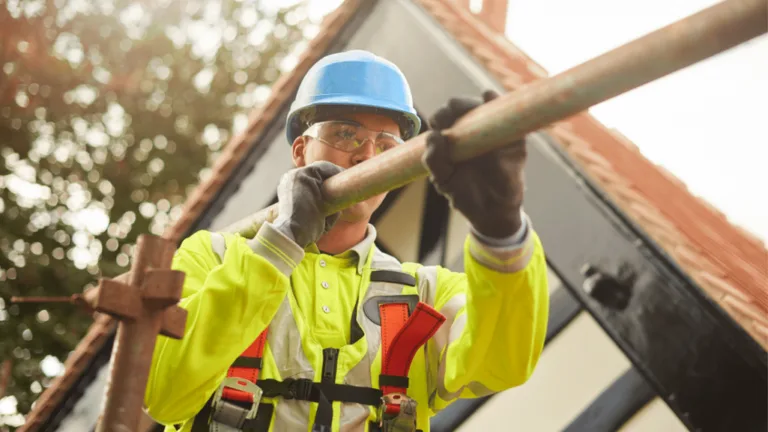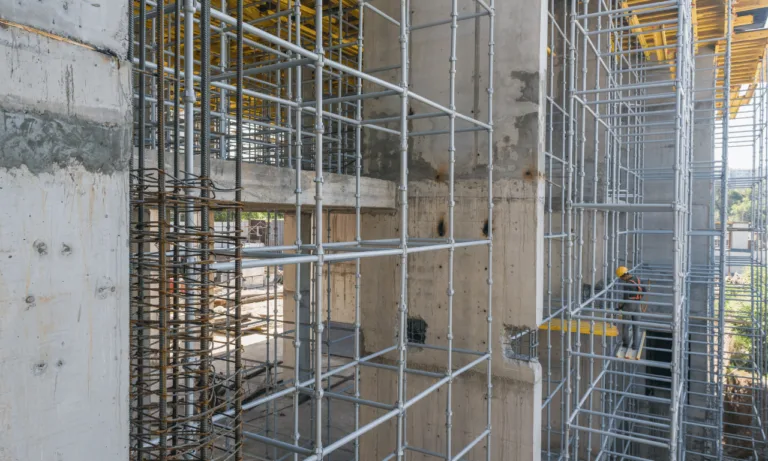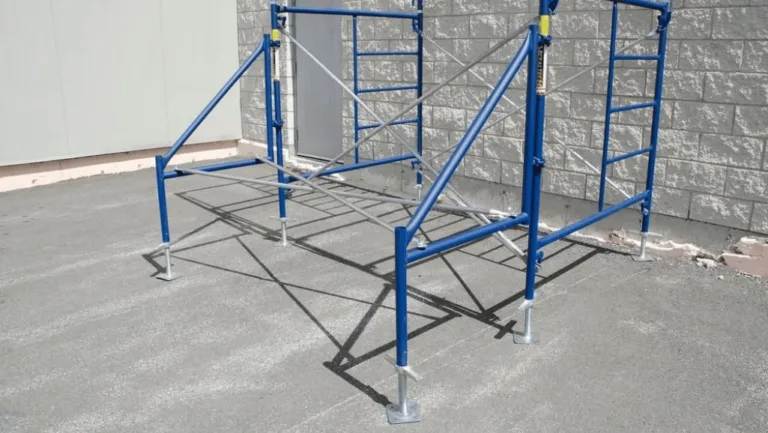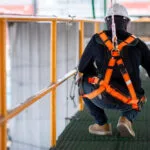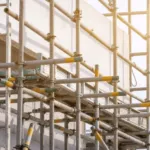Phone:
(+65)8319-0742
Starting a scaffolding project needs careful planning and prep. It’s key to make sure the construction is safe and goes smoothly. A detailed checklist for starting scaffolding projects helps spot dangers, follow safety rules, and set up temporary structures well.
Doing thorough site checks is important. It helps look at the terrain, find any problems, and see if the site is right for the work. By planning well, construction teams can lower risks, use resources better, and make scaffolding installation safer.
Scaffolding Project Startup Checklist Download
Key Takeaways
- A scaffolding project startup checklist helps identify hazards and ensure safety compliance
- Thorough site inspections are crucial for assessing terrain and identifying obstacles
- Effective construction site planning optimizes resources and mitigates risks
- Considering environmental factors and unique challenges is essential for successful scaffolding installation
- Proper planning and preparation lay the groundwork for a safe and efficient scaffolding project
Understand the Project Scope and Requirements
For a scaffolding project to succeed, knowing the project scope and requirements is key. This means reviewing project plans and specs to spot any challenges that might affect the timeline, budget, or safety. Good project planning is crucial for a successful scaffolding project.
Review Project Plans and Specifications
Start by looking over the project plans and specs given by the client or architect. Make sure to notice the building’s size, how high the scaffolding needs to be, what it can hold, and any special features or obstacles. Talk with project stakeholders to clear up any unclear points and make sure everyone knows what the project needs. Good project planning is vital, as shown in this best practices checklist for managing projects.
Identify Unique Challenges and Constraints
When planning the project, it’s important to spot any special challenges or limits that might affect the scaffolding. These could be:
- Limited access to the site because of its location or nearby buildings
- Ground that’s not even or stable, needing more site prep
- Deadlines or other scheduling issues that make efficient project management a must
- Special safety risks or environmental issues that need more care
Spotting these challenges early lets the scaffolding team come up with plans to deal with them. This helps avoid risks and makes the project go smoothly, safely, and efficiently. Doing a detailed risk assessment is a big part of planning, helping to put safety first and use resources well.
Getting the site ready is also key in project planning. This means checking the site’s access, its shape, and any hazards or obstacles that could affect putting up the scaffolding. Knowing these things ahead of time helps the team get the site ready, cutting down on delays and risks during the project.
| Project Planning Component | Key Considerations |
|---|---|
| Project Scope Review | Building dimensions, scaffolding heights, load-bearing requirements, special features |
| Risk Assessment | Identifying potential safety hazards, environmental concerns, and developing mitigation strategies |
| Site Preparation | Evaluating site accessibility, terrain, potential obstacles, and ground conditions |
| Project Management | Establishing timelines, allocating resources, coordinating with stakeholders, and ensuring efficient execution |
Understanding the project scope, spotting unique challenges, and planning well sets scaffolding pros up for success and safety. Good project management and careful planning, along with risk assessment, are key to beating challenges and getting the desired outcomes.
Project Documentation For Supervisors
Before starting a scaffolding project, supervisors must check all the needed documents. This step is key for a successful and safe project. It makes sure everything follows the rules and keeps the site safe.
Important documents include permits, safety plans, and insurance papers. These show that the project is well-planned and follows industry standards.
Evaluate Site Accessibility and Terrain
Looking at the site’s accessibility and terrain is crucial. Supervisors need to check the ground’s stability, any overhead obstacles, and how to get to the site. This helps find the best way to set up scaffolding safely and efficiently.
By doing a detailed site check, supervisors can spot potential problems. They can then plan how to avoid these risks. This keeps the work area safe and smooth.
Consider Environmental Factors and Weather Conditions
Weather and the environment can affect scaffolding projects a lot. Supervisors must think about possible weather delays and how the scaffolding will handle the wind and other weather conditions. Adding these factors into the planning helps avoid delays and keeps the site safe.
Identify Potential Hazards and Obstacles
Finding and dealing with hazards and obstacles is key to keeping the site safe. Supervisors should look closely at the site to spot things like unstable ground, electrical dangers, or busy areas. By fixing these problems before they start, supervisors can greatly lower the chance of accidents.
| Hazard | Potential Risk | Control Measure |
|---|---|---|
| Uneven ground | Scaffolding instability | Leveling and stabilization techniques |
| Overhead power lines | Electrocution | Maintain safe working distances |
| High-traffic areas | Collisions and struck-by incidents | Implement traffic control plans |
OSHA Compliance
Following Occupational Safety and Health Administration (OSHA) rules is key for scaffolding projects. These rules help keep workers safe and make sure the work area is safe. Employers need to focus on scaffolding design, how it’s set up, and worker training, along with the use of personal protective equipment (PPE).
OSHA sets clear rules for scaffolding. These rules cover things like how much weight it can hold, the size of the platform, and safety rails. Following these rules helps make sure scaffolding is safe and strong, lowering the chance of accidents.
Training workers is also vital for OSHA compliance. Workers need to know how to stay safe, spot dangers, and use the right protective gear. This training should be given by experts and match the project’s needs and scaffolding types.
Checking scaffolding regularly is another important part of following OSHA rules. Employers must have people who can check the scaffolding before work starts and after any event that might have damaged it. These checks help find and fix any problems to keep the work area safe.
| OSHA Scaffolding Regulation | Key Requirements |
|---|---|
| 1926.451(a) | Scaffolding must be strong enough to hold its own weight and four times the heaviest load it will carry. |
| 1926.451(e) | Platforms must be fully covered with planks or decking, with no gaps over an inch wide. |
| 1926.451(g) | Guardrails, including top rails and midrails, must be put up on all open sides and ends of platforms. |
| 1926.454(a) | Scaffolding should only be set up, moved, taken down, or changed by someone who knows what they’re doing. |
Putting OSHA rules first helps make scaffolding projects safe. It cuts down on accidents, injuries, and delays. By following the rules, training workers, and using the right gear, employers show they care about safety and responsible building.
Safety and Environmental Assessments
Before starting any scaffolding project, it’s key to do thorough safety protocols and environmental checks. These steps help spot dangers, cut down risks, and follow local laws and building codes. By focusing on safety and the environment early on, project leaders can set a strong base for a successful scaffolding project.
Research Local Building Codes and Regulations
It’s vital to learn and understand local building codes and rules for scaffolding projects. Each place has its own rules about scaffolding design, materials, and how to build it. Not following these rules can lead to big delays, fines, and legal problems. Project managers should spend enough time looking into codes and talking to local officials to make sure the project follows all the rules.
Submit Required Documentation and Applications
After figuring out local building codes, project managers must send in all needed documents and applications. This might mean getting permits, showing detailed project plans, and proving you follow safety and environmental rules. Sending in complete and right documents can make getting approval smoother and lower the chance of delays. Project managers should make a list of needed documents and set a timeline for sending them in to stay on schedule.
Along with safety plans and permit needs, doing deep risk and environmental assessments is key. These assessments help spot challenges and lessen risks. They might cover:
- Looking at site conditions and how to get to it
- Checking how weather and the environment might affect the project
- Finding potential dangers, like overhead power lines or shaky ground
- Figuring out if special equipment or materials are needed
By doing full assessments and sending in all needed documents, project managers can set the stage for a safe and legal scaffolding project. This careful planning not only keeps workers and the environment safe but also shows a strong commitment to professionalism and top-notch scaffolding practices.
Personal Protective Equipment (PPE)
When starting a scaffolding project, making sure workers are safe is key. It’s vital to give them the right personal protective equipment (PPE). This includes hard hats, safety glasses, gloves, and gear for preventing falls.
Select Appropriate Scaffolding Systems for the Project
Picking the right scaffolding is crucial for a safe work area. Think about the project’s height, the weight of materials, and how complex it is. There are different scaffolding types, like supported, suspended, and mobile scaffolds, each suited for specific needs.
Ensure Compliance with Safety Standards and Regulations
Following safety standards and rules is a must for scaffolding work. Checking the scaffolding often and making sure workers are trained and have the right safety equipment is key. Sticking to safety standards keeps workers safe, avoids delays, and prevents legal problems.
| PPE Item | Purpose |
|---|---|
| Hard Hat | Protects the head from falling objects and impact |
| Safety Glasses | Shields the eyes from debris, dust, and other hazards |
| Gloves | Provides grip and protects hands from cuts, abrasions, and chemicals |
| Fall Protection Gear | Prevents falls from heights and minimizes the risk of serious injuries |
By focusing on PPE, choosing the right scaffolding systems, and following safety standards, contractors can make their work safe and efficient.
Personnel Training and Records
Keeping a scaffolding project safe and successful needs a well-trained team. It’s key to give everyone involved in the project scaffolding training. This includes how to set up and take down scaffolding, use it daily, and keep it in good shape. Training on safety rules, the right steps to follow, and what to do in an emergency is a must.
Keeping track of each worker’s training and qualifications is also vital. These training records show that everyone meets the industry’s standards. They prove that workers have the skills and knowledge to work safely. Checking these records often helps spot any training or certification issues that need fixing.
It’s important to keep workers updated on the latest safety protocols and methods. This can be done with regular training, like refresher courses and hands-on practice. This approach helps keep the job site safe and efficient by promoting ongoing learning and improvement.
Using a detailed checklist, like the Pre-Startup Safety Review (PSSR) checklist, is a great way to manage training. This checklist makes sure all important training and certification needs are met before starting the project. It helps avoid accidents or delays caused by not being fully prepared.
Key parts of a good scaffolding training program are:
- How to set up and take down scaffolding safely
- Using fall protection systems and gear
- Dealing with site-specific dangers and safety steps
- Plans for emergencies and evacuations
- Rules for personal protective equipment (PPE)
By focusing on thorough training and keeping accurate records, scaffolding project managers can make sure the work site is safe, follows the rules, and runs smoothly. Investing in the training and certification of the team not only keeps workers safe but also helps the project and the company succeed.
Tools and Equipment
Keeping a scaffolding project safe and efficient means paying close attention to the tools and equipment used. It’s key to do equipment inspections often to stop accidents and delays. Before you start, make sure you have all the tools and equipment you need, like scaffolding parts, safety gear, and any special tools for the job.
Getting the right materials is also vital. You need to order the correct amount and make sure they arrive on time to avoid delays. When picking materials, think about how long they last, if they fit with your metal scaffolding, and if they meet safety standards.
Conduct Hands-On Training Sessions
Hands-on training is a great way to make sure workers know how to use the tools and equipment. These sessions should teach how to use scaffolding parts and any special tools needed for the job. Workers should get to practice with experienced supervisors or trainers guiding them.
Cover Site-Specific Safety Protocols and Procedures
It’s important to teach workers about safety rules that apply to the specific site. This includes knowing where to get on and off, how to stay safe from falls, and what to do in an emergency. Workers should know about any special dangers at the site, like power lines or rough ground.
Emphasize the Importance of Personal Protective Equipment (PPE)
Wearing Personal Protective Equipment (PPE) is crucial for worker safety on scaffolding projects. This includes things like hard hats, safety glasses, gloves, and harnesses for falling. Supervisors should stress the need for PPE during training and daily talks. It’s also important to check often that everyone has and is using their PPE right.
By focusing on the right tools, keeping them in good shape, and training workers, scaffolding projects can be safe and successful. Regular training, checks, and talking to each other can help prevent accidents and keep the project moving smoothly.
Inspections, Audits, Communication and Reporting
Keeping a scaffolding project on track means having a strong system for inspections, audits, communication, and reporting. This approach helps spot problems early, keeps the team in sync, and ensures quality throughout the project. It’s key for safety and success.
Designate Key Points of Contact
Good communication is vital for a scaffolding project’s success. By picking key people like a project manager and safety coordinator, you make sure everyone knows what to do. They keep the team and stakeholders informed and work towards common goals.
- They manage inspections and quality checks.
- They help team members talk to each other and to stakeholders.
- They watch the project’s progress and solve any problems.
Implement Regular Progress Meetings and Updates
Regular meetings and updates keep the project on time and clear. They let team members share what they’ve done, talk about problems, and work together on solutions. Here’s what makes progress reporting work:
- Daily or weekly meetings to check on tasks and set priorities.
- Reports that show important details, milestones, and any changes.
- Spaces for team members to give feedback, make suggestions, and talk about concerns.
| Inspection Type | Frequency | Responsible Party |
|---|---|---|
| Daily Safety Check | Every morning before work begins | Scaffolding Crew |
| Weekly Compliance Audit | Once per week | Safety Coordinator |
| Monthly Progress Review | First Monday of each month | Project Manager |
A strong system for inspections, audits, communication, and reporting helps scaffolding project managers. It ensures teams work well, safely, and follow the rules. This approach prevents accidents and delays, builds trust, and leads to a successful project.
Scaffolding Project Startup Checklist
Starting a new scaffolding project needs careful planning for a smooth start. A detailed checklist is key for managing safety, following rules, and planning out tasks. It helps with scheduling and making sure you have the right resources.
It’s important to make a checklist that covers all the main steps. This helps with keeping an eye on the project timeline and reducing risks. When making your scaffolding project startup checklist, think about these important points:
Create a Detailed Checklist Covering All Critical Steps
- Safety needs and risk checks
- Following the rules and getting permits
- Training and certifying the team
- Buying the right equipment and materials
- Getting the site ready and arranging logistics
- Checking quality and inspecting work
Assign Responsibilities and Deadlines for Each Item
Make sure everyone knows what to do and by when by assigning tasks and deadlines. This keeps the project moving forward and everyone on the same page. It helps with starting the project well and doing it right.
| Task | Responsible Party | Deadline |
|---|---|---|
| Conduct site safety assessment | Safety Manager | Week 1 |
| Get permits and approvals | Project Manager | Week 2 |
| Plan training for the team | HR Coordinator | Week 3 |
| Buy scaffolding gear and materials | Procurement Specialist | Week 4 |
Regularly Review and Update the Checklist as Needed
Keep checking and updating your checklist as the project goes on. This means changing it if the project changes or if new rules come up. Keeping the checklist up-to-date helps make sure it stays useful and effective throughout the project.
Using a thorough scaffolding project checklist and planning tasks well helps construction teams start strong. It sets the stage for a project that’s both successful and safe.
Implement a Robust Quality Control Process
It’s key to have a strong quality control process for scaffolding. This ensures it’s built and kept up safely and well. This means making detailed inspection plans and checklists for every part of the project, from start to finish.
Quality control should be part of every scaffolding project step. This way, problems can be caught early and fixed before they get worse. It’s important to keep the work area safe for everyone working on the project.
Keeping quality control up to date is crucial. This means listening to workers and safety experts, and keeping up with new standards and practices. By always improving quality control, scaffolding projects can stay safe and efficient.
| Quality Control Phase | Key Activities |
|---|---|
| Planning and Design |
|
| Erection and Assembly |
|
| Maintenance and Monitoring |
|
| Final Inspection and Sign-off |
|
With a solid quality control process that covers all scaffolding project stages, contractors can finish projects safely and well. This focus on quality and safety keeps workers safe and boosts the scaffolding industry’s trust and respect.
Conclusion
Using a detailed scaffolding project startup checklist is key for safety, efficiency, and success. It covers everything from planning to quality control. This checklist helps reduce risks and meet all rules and standards.
Good planning and management are crucial for scaffolding projects. They mean setting clear goals, giving out tasks and deadlines, and updating plans as needed. This keeps the project on schedule and within budget.
Putting safety and managing risks first is essential. This means doing thorough risk checks, setting strong safety rules, and training everyone involved. By focusing on safety, scaffolding projects can be done well and safely.
To wrap it up, a scaffolding project checklist is a must-have for builders. It makes sure all important parts of the project are covered. This keeps the project safe, of high quality, and efficient from start to finish.


